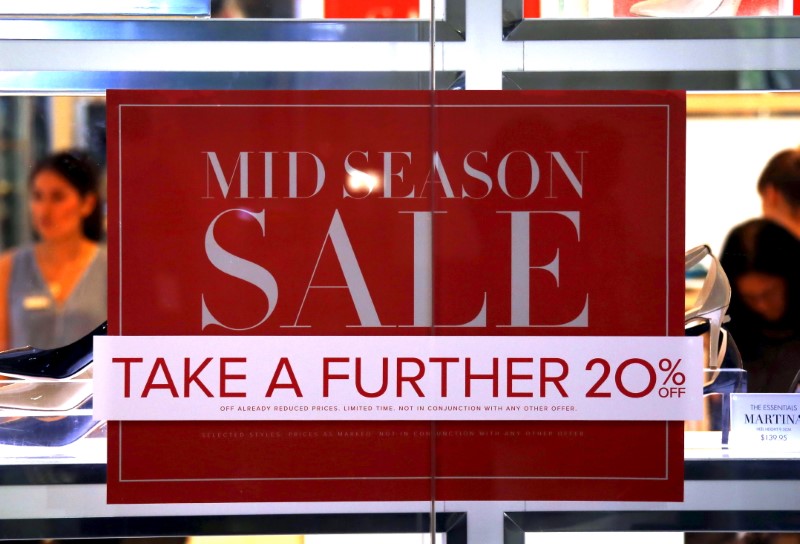By Wayne Cole and Swati Pandey
SYDNEY (Reuters) - Australian consumer prices were surprisingly tame last quarter while core inflation stayed below target for almost a second full year, leading investors to pare back the already slim chance of a rate hike for months to come.
The local dollar dived to a 4-1/2 month trough as the consumer price index (CPI) rose 1.8 percent for the year to September, below market forecasts of 2.0 percent.
Underlying inflation averaged around 1.85 percent, again missing estimates and actually a touch slower than in the second quarter.
Core inflation has now undershot the Reserve Bank of Australia's (RBA) long-term target band of 2 percent to 3 percent for seven straight quarters, the longest period on record.
"Consumer prices are amazingly benign across the economy," said Matt Sherwood, Sydney-based head of investment strategy for fund manager Perpetual Investments.
"That's because wages growth is at an all-time low, and households are saving more to pay down their debt," he said. "It tells me that the RBA is on hold not only in 2017 but also all of 2018."
Investors battered the Australian dollar <AUD=D4>, sending it sliding 0.7 percent to $0.7716, its lowest since mid-July.
Interest rate futures <0#YIB:> moved to further push out the likely timing of any hike. A rise in rates to 1.75 percent is now not fully priced in until November next year.
DISINFLATIONARY PRESSURES
The Australian Bureau of Statistics reported its headline CPI rose 0.6 percent in the third quarter, from the second quarter when it edged up just 0.2 percent.
That missed market forecasts for a 0.8 percent increase, with vegetables, petrol and telecoms all falling in price.
Supermarket giant Coles on Wednesday blamed a slowdown in its sales growth on a rapid fall in the price of fresh produce and fierce retail competition.
The Wesfarmers-owned (AX:WES) retailer is cutting prices to win market share from rivals, while margins were further compressed by "significant" produce price deflation.
Energy prices saw the single biggest increase, rising 8.9 percent in the third quarter and adding 0.25 percentage points to the overall increase in CPI.
Economists see that trend as more of a tax on consumer spending than a sign of overheating demand, greatly lessening the need for an interest rate response by the RBA.
"This is the wrong type of inflation, in that the increases are in non-discretionary, regulatory type components," said Su-Lin Ong, Sydney-based senior economist at RBC Capital.
"You might say core inflation has probably troughed but it is showing little signs of momentum. The odds are that it will stay around these levels for some time."
The inexorable rise of electricity costs is largely a function of policy failure and has become a major political headache for Prime Minister Malcolm Turnbull.
After months of prevarication, the government recently outlined a plan for a national energy guarantee that essentially put the onus on utilities to fix the problem.
So far, the plan has been long on aspirations and short on detail and analysts suspect energy prices will continue to rise in the near term.
Indeed, policy makers have repeatedly stressed they will look through the impact of energy prices on inflation and that any move in rates is still "some time" away.

"The key takeout from the Q3 result is that price pressures remain comatose with no need for the RBA to reach for the rate hike lever anytime soon," said John Peters, a senior economist at Commonwealth Bank.